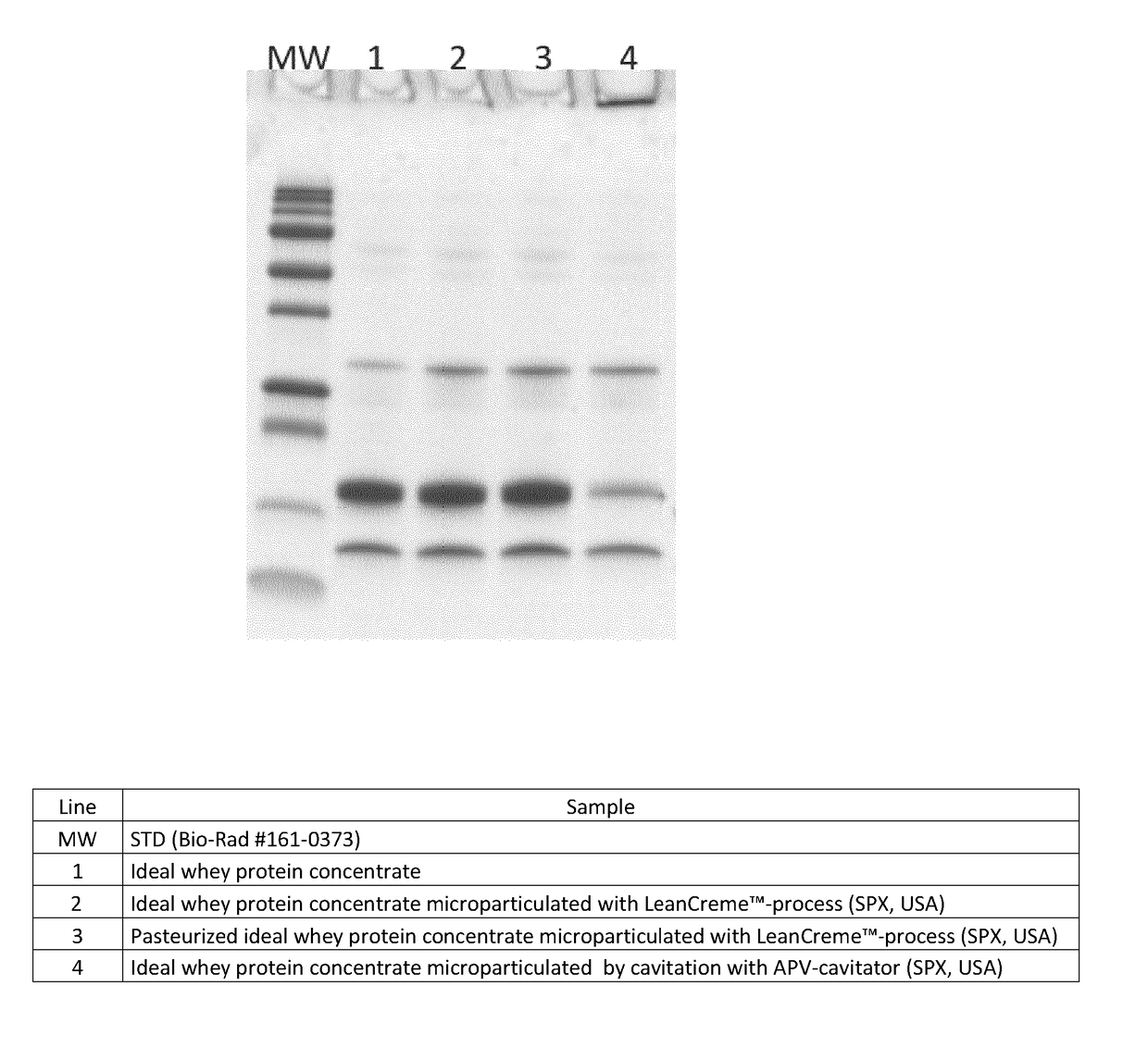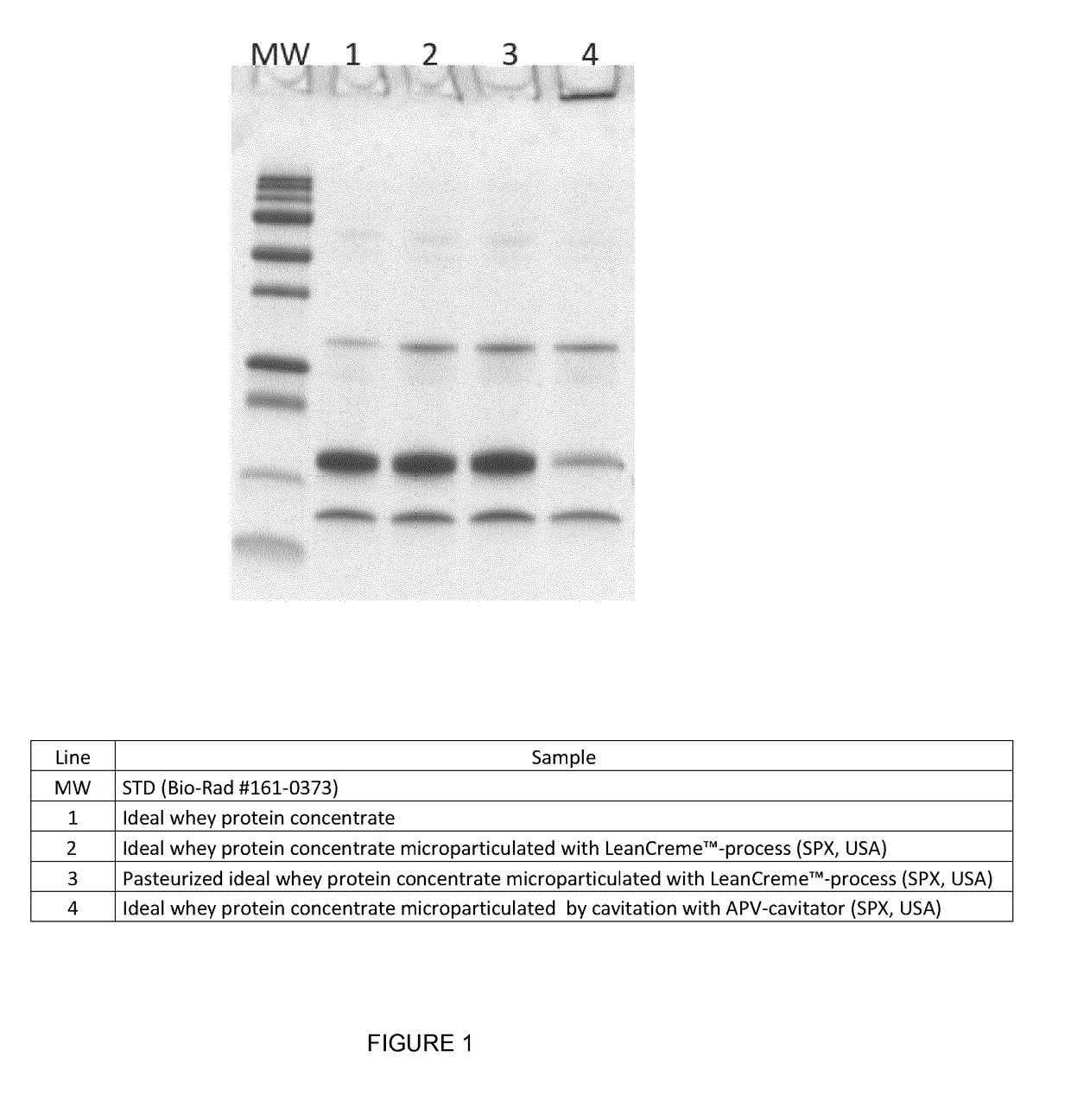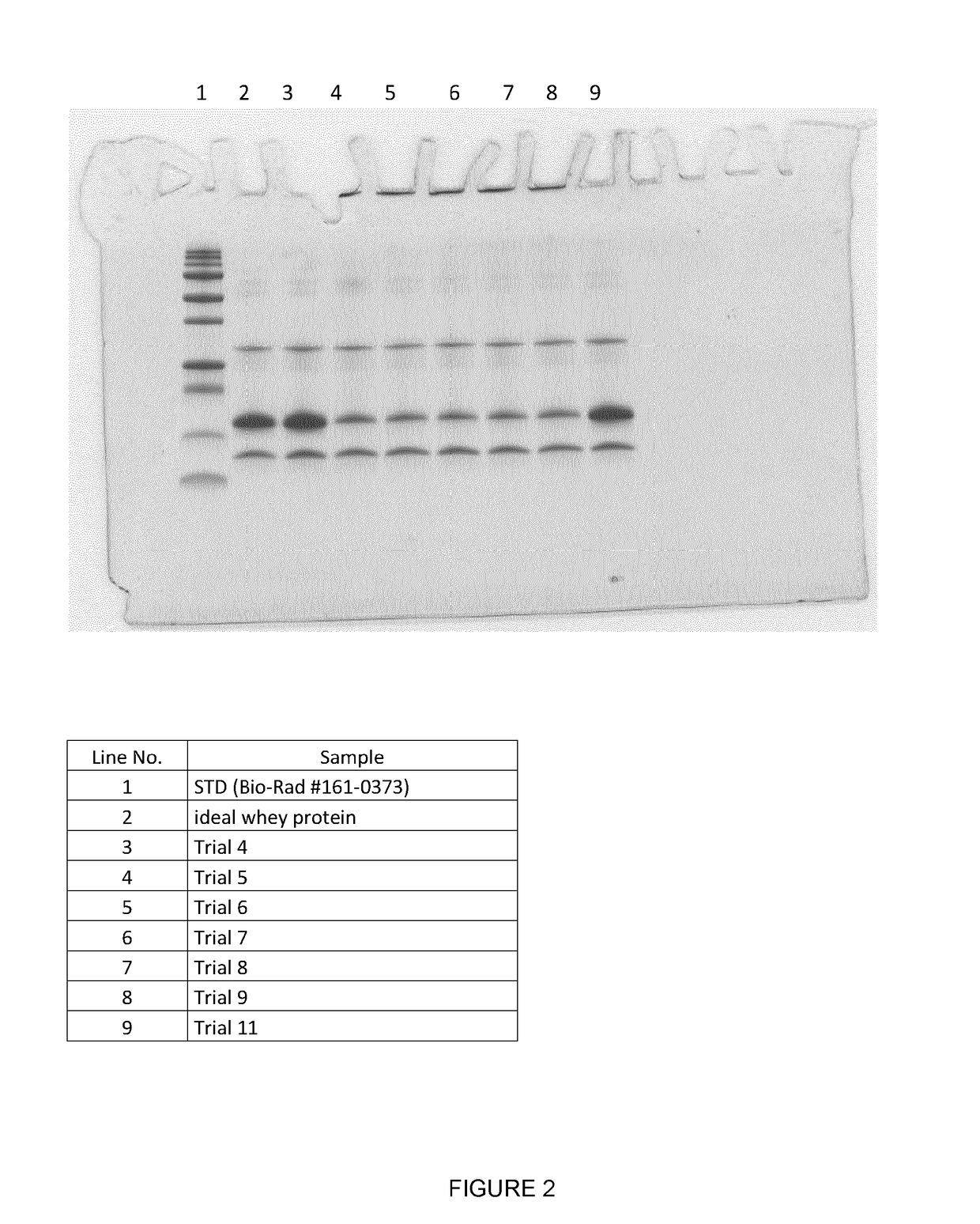Whey preparation obtained by cavitation and uses thereof
a technology of whey protein and cavitation, which is applied in the field of microparticulation of ideal whey protein, can solve the problems of not producing creamy texture and/or taste into acidified milk products, and achieves the effect of reducing the amount of acidified milk products
- Summary
- Abstract
- Description
- Claims
- Application Information
AI Technical Summary
Benefits of technology
Problems solved by technology
Method used
Image
Examples
example 1
Production of Microparticulated Ideal Whey Protein Preparation by Caviation
[0105]Ideal whey protein solution (protein 9%) was preheated to a temperature of 27° C. and run through an APV cavitator (SPX, USA) using operating values 56.4 Hz and 2001 / h, lag-time 30 s. The counterpressure of the device was 2.5 bar, wherein the device was made to cavitate in a controlled way. The cavitator has a spinning cylinder which has holes in four lines and a clearance of 3 mm. During the cavitation the temperature rose up to 93° C.
[0106]In the cavitator, the spinning action generates friction internally in the liquid and the holes generate hydrodynamic cavitation.
[0107]After this, the microparticulated ideal whey was cooled to a temperature of 4° C. using a a scraped-surface heat exchanger.
[0108]As a result, a thick / viscous light brownish microparticulated ideal whey protein preparation having particle size of 1-200 m was achieved. The taste of the microparticulated ideal whey protein preparation w...
example 2
Production of Fat-Free Yogurt (Reference Example)
[0110]The reference yogurt was prepared from skimmed milk, which was pasteurized at 90° C. for 5 minutes and then cooled to the temperature of about 42° C. The starter culture YF-L901 from Chr. Hansen (0.02%) was added and the raw material milk was acidified until the pH was 4.5. After the desired pH was reached, the mass was mixed and treated with YTRON rotor-stator mixer (30 Hz) and cooled to a temperature of about 20° C. The product was packed and cooled to a temperature of about 5° C. in a cold storage.
example 3
[0111]Production of Fat-Free Yogurt from Microparticulated Ideal Whey Protein Concentrate
[0112]The yogurt was prepared from skimmed milk (72.2%) and the microparticulated ideal whey protein preparation of Example 1 (27.8%). The skimmed milk was pasteurized at 90° C. for 5 minutes and then cooled to the temperature of about 42° C. The starter culture YF-L901 from Chr. Hansen (0.02%) was added and the raw material milk was acidified until the pH was 4.5. After the desired pH was reached, the mass was mixed and treated with YTRON rotor-stator mixer (30 Hz) and cooled to a temperature of about 20° C. The microparticulated ideal whey protein preparation was added and the product was packed and cooled to a temperature of about 5° C. in a cold storage.
[0113]The yogurt was full-flavored and creamy whereas the reference yogurt of Example 2 had a watery, not creamy, taste.
[0114]The yogurt of the invention was about 5.3 times thicker than the reference yogurt. After one week of storage, the vi...
PUM
 Login to View More
Login to View More Abstract
Description
Claims
Application Information
 Login to View More
Login to View More - R&D
- Intellectual Property
- Life Sciences
- Materials
- Tech Scout
- Unparalleled Data Quality
- Higher Quality Content
- 60% Fewer Hallucinations
Browse by: Latest US Patents, China's latest patents, Technical Efficacy Thesaurus, Application Domain, Technology Topic, Popular Technical Reports.
© 2025 PatSnap. All rights reserved.Legal|Privacy policy|Modern Slavery Act Transparency Statement|Sitemap|About US| Contact US: help@patsnap.com



